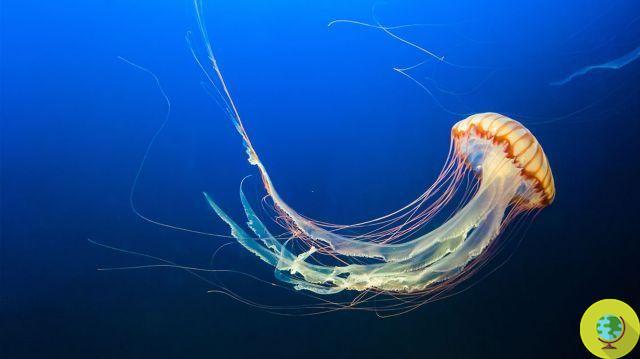
According to Ispra, next summer the number of jellyfish we may unfortunately come into contact with should not increase compared to previous years.
He is about to end up run over, his mother saves himSummer is coming, and with it the jellyfish danger. According to experts, this year the presence of jellyfish has been slightly decreasing in the winter months and this could suggest that even in summer we should suffer less from unpleasant encounters with their tentacles.
This was reported by Franco Andaloro of the Higher Institute for Environmental Protection and Research (Ispra) who explained the risks for the upcoming season to Adnkronos. “In the last four years - he says - their presence, which was linked to cycles, has instead stabilized. Although in the winter of 2011 we detected a slight decrease compared to 2010, which may make us wish for a less impact on summer bathing. But at present it is not possible to predict what will happen in August “.
It could be better, or maybe not. One thing is certain. The increase in jellyfish in recent years is certainly linked to pollution. Underlying the increase in jellyfish are once again i climate changes, not only for what concerns the heating of the waters. According to the expert, the increase in temperature also results in greater rainfall, with the consequent pouring into the sea of fresh water, to which is added the decrease in predators such as turtles or some fish species called 'jellyfish-eating'. An altered link in the food chain, as although turtles are ravenous, they are unable to cope with the increase in jellyfish.
To make matters worse, according to Andaloro, there is also another fact. The abundance of jellyfish entails a decrease in fish stocks: “If we consider that jellyfish also feed on fish eggs and larvae, causing a decline in fish stocks that are the target of fishing activities”.
In addition to the common ones, present in our seas, including the Pelagia noctiluca, in recent decades new species have arrived, especially in the waters of Sicily, and in particular the rare Physalia phisalis or Portuguese caravel. In reality, it is not a real jellyfish but a siphonophore, that is a colony of polyps, and is easily recognizable by its characteristic floating sac shape with long blue tentacles.
“To avoid anxiety - concludes Andaloro - we must reiterate that Portuguese caravels are lethal only when large, enormous in size. And in the Mediterranean Sea there are none of this type. They are present only in the oceans “. Almost.
And if you are among the unfortunate ones who will end up in the clutches of annoying marine animals this summer, try our natural remedies for the burn caused by the jellyfish.
Francesca Mancuso


























